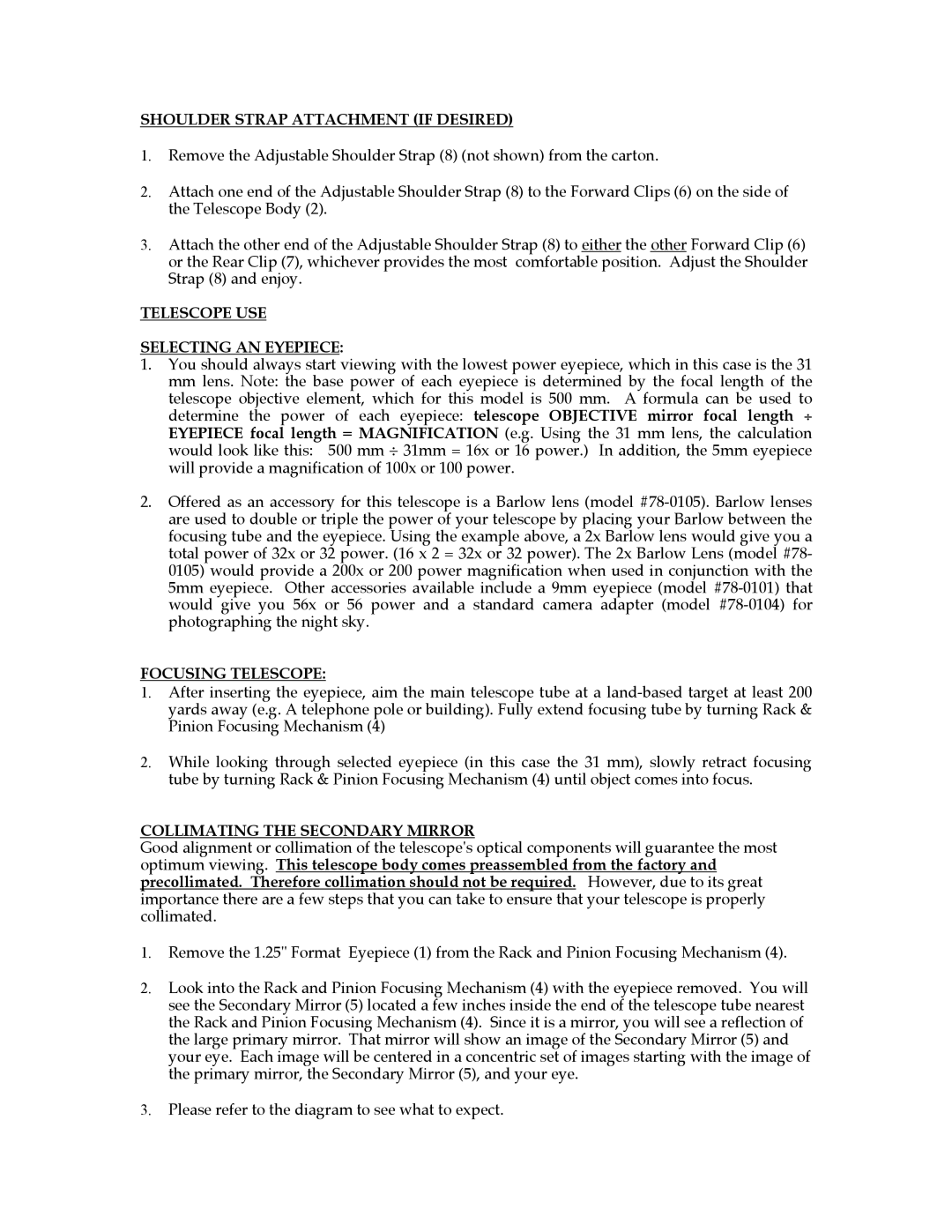78-2010 specifications
The Bushnell 78-2010 is a sophisticated and reliable GPS navigation device designed to enhance outdoor experiences, particularly for hikers, campers, and outdoor enthusiasts. This device combines cutting-edge technology with user-friendly features to ensure seamless navigation and exploration in various terrains.At the heart of the Bushnell 78-2010 is its high-sensitivity GPS receiver. This feature allows for quick satellite acquisition and improved tracking in challenging environments, such as dense forests or open terrains. The 78-2010 can achieve accurate location tracking, ensuring that users can navigate confidently without worrying about losing their way.
One of the standout features of the Bushnell 78-2010 is its impressive display. Equipped with a vibrant color screen, the device provides clear visibility even under bright sunlight. The user interface is intuitive, allowing users to easily access maps, routes, and other important information. With a resolution that supports crisp graphics, users can efficiently read topographical maps and other detailed data.
The device is designed with rugged outdoor use in mind. Its waterproof construction provides resistance against rain and splashes, allowing users to take it on all types of adventures without fear of damage. Further enhancing its durability, the 78-2010 is built to withstand shocks and bumps, making it an excellent companion for adventurous outings.
Another notable characteristic of the Bushnell 78-2010 is its extensive map storage capacity. Users can download and store detailed maps, including topographic data, which can be essential for navigation in unfamiliar areas. This feature allows for personalized mapping, giving users the flexibility to choose the best routes for their journeys.
Battery life is a crucial aspect of any outdoor gadget, and the Bushnell 78-2010 excels in this area. With long-lasting battery performance, users can rely on the device for an extended period without frequent recharging, ensuring it stays functional during longer excursions.
In conclusion, the Bushnell 78-2010 stands out as a reliable GPS device with features tailored for outdoor enthusiasts. Its high-sensitivity GPS functionality, vibrant display, rugged design, extensive map storage, and impressive battery life combine to create an essential tool. Whether navigating through dense forests or exploring new trails, the 78-2010 is equipped to meet the demands of any adventure.
